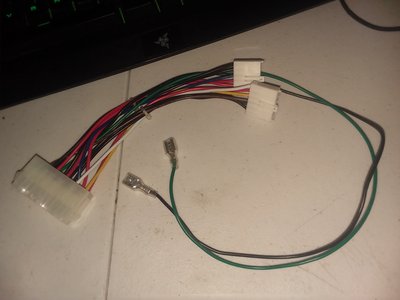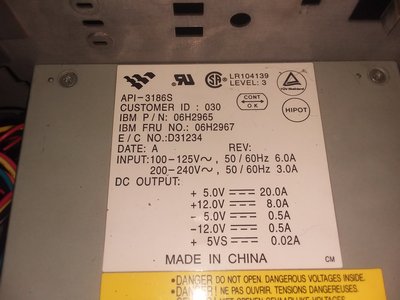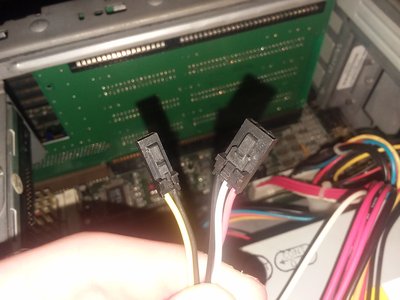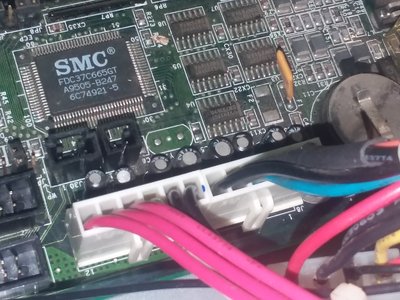First post, by athlon-power
- Rank
- Member
I've written about this PC before, when I was trying to fiddle with the cache on it. I found a 256k set (9 chips!) of L2 cache on eBay for quite cheap, and they aren't crappy Chinese imports. Hopefully, I'll get some L2 cache now. I can also blame the prior owners for this lack of L2 cache, as IBM advertised it as "optional," and the geniuses at the automotive repair establishment that this ostensibly came from (gauging by the files on the HDD that I formatted soon after testing it a bit), likely figured it cost less, so they cut the price there, because it was an "optional," "accessory," that added more to the price of the computer.
Anyways, this computer has a proprietary PSU connection style- something I don't like. I'm not privy to using 2 decade old PSUs without being able to take them apart and see the capacitors and at least try to clean them out- this one uses those stupid star screw-heads, so that's a no-go for me. I figured I'd buy a standard ATX to AT PSU adapter when I first got this thing, and it would be okay. I was apparently wrong.
Replacement PSUs for this system are exorbitantly expensive, and while this one works, I would rather not have a potential ticking time bomb in this system once I get that cache. I've considered just waiting to dump ~US$70 on a new Socket 3 486 motherboard over this, because I refuse to risk parts on a PSU that may or may not explode spectacularly in the near future. Rather than the normal AT PSU connectors, this system uses two special connections; the motherboard connects to the front power button, and the PSU connects to the motherboard using a proprietary 3-pin connector that does something. Without this connector connected, the system will not boot, meaning that the motherboard sends a power-on signal through this 3-pin cable and into the PSU.
My question is this: Is there any way to bypass this cable/PSU system so that I can install a new ATX PSU I trust, and adapt it using my standard AT adapter?
Pictures:
A little while back I tried manually jumping the green/black wires while the PSU was plugged into the motherboard, and got it to POST and go into BIOS once or twice, but the power light flashed at a high speed, and it was difficult as hell to hold it in the right place before I'd slip and the system would shut off. This makes me think that a more solid bypass might be possible, but until I know exactly what that 3-pin connector does other than sending the signal to turn the PSU on, I don't want to go any further.
Where am I?




